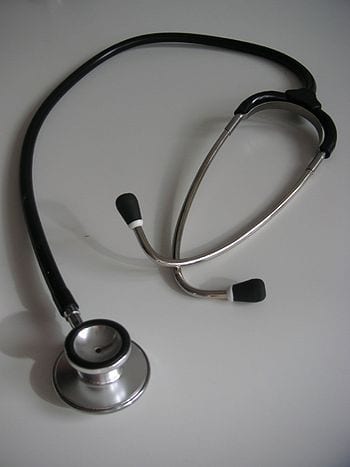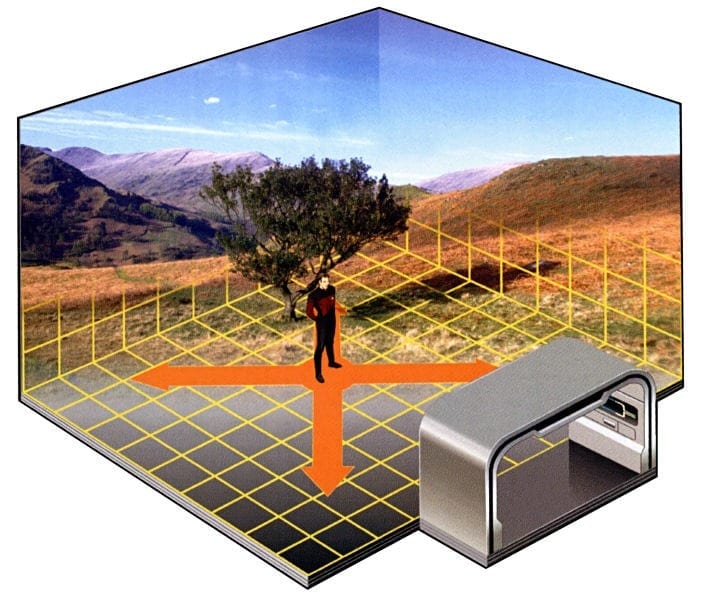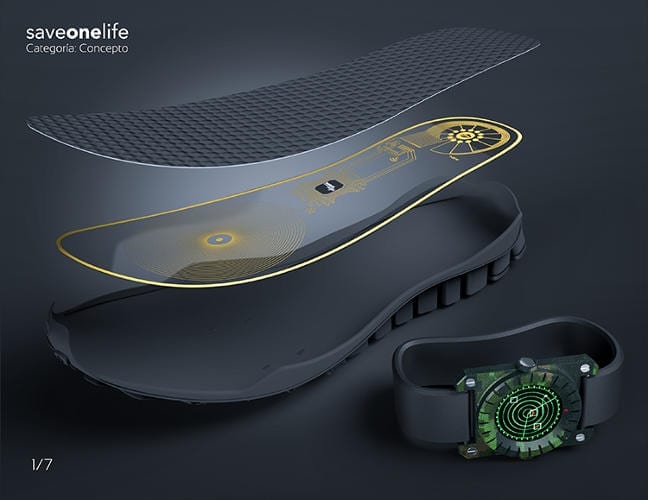
“Certainly the stage is set for disruption”
An editorial in this month’s edition of Global Heart (the journal of the World Heart Federation) asks ‘are we living in the final days of the stethoscope’—a question being asked due to the rapid advent of point-of-care ultrasound devices, that are becoming increasingly accurate, smaller to the point of being hand-held and less expensive as the years roll by. The Editorial is by Professor Jagat Narula, Editor-in-Chief of Global Heart (Mount Sinai School of Medicine, New York, USA) and Associate Professor Bret Nelson, also of Mount Sinai School of Medicine, New York, USA.
In the editorial, a brief history of both the stethoscope (invented in 1816) and ultrasound (invented in the 1950s) is given, with the authors suggesting that the stethoscope could soon be exiled to the archives of medical history. They say: “At the time of this writing several manufacturers offer hand-held ultrasound machines slightly larger than a deck of cards, with technology and screens modelled after modern smartphones.” Compared with expensive, bulky, ultrasound machines of the past, the authors say that “Hand-held ultrasound devices introduced an alternative concept of relatively inexpensive, easy-to-use machines which could generate images interpretable by a wider spectrum of clinicians at the point of care. Soon concerns about smaller machines having inferior image quality compared to devices many times larger and more expensive were outweighed by evidence that rapid diagnostic decisions could be made with portable machines.”
The editorial highlights that nowadays, more than 20 medical specialties include use of point-of-care ultrasound as a core skill, and that mounting evidence suggests that compared with the stethoscope ultrasound technology can reduce complications, assist in emergency procedures and improve diagnostic accuracy.
The authors say: “Thus, many experts have argued that ultrasound has become the stethoscope of the 21st century. While few studies have pitted ultrasound head-to-head against the stethoscope, there is evidence that ultrasound is more accurate even than chest x-ray in the detection of pneumothorax, pleural effusion, and perhaps even pneumonia. Ultrasound allows visualisation of cardiac valve function, contractility, and pericardial effusions with greater accuracy than listening with the stethoscope. And beyond the heart and lungs lie dozens of other organs and structures- well-described in the literature of point of care ultrasound- which are opaque to the abilities of the stethoscope.”
Asking why the stethoscope has not yet made way for its more technically advanced counterpart, ultrasound, the authors say that while the cheapest available stethoscopes are literally disposable (though many can cost hundreds of dollars), the cost of the cheapest ultrasound devices is still several thousand dollars, making roll-out, especially in developing nations, much more difficult. There may also be resistance from the older generation of healthcare workers who were not originally trained with this technology. Yet all the evidence shows that ultrasound can diagnose heart, lung, and other problems with much more accuracy than the 200-year-old stethoscope.
The Latest on: Point-of-care ultrasound
[google_news title=”” keyword=”Point-of-care ultrasound” num_posts=”10″ blurb_length=”0″ show_thumb=”left”]
via Google News
The Latest on: Point-of-care ultrasound
- Inteleos, Inc.: Inteleos to Host Roundtable on Advancing Maternal Health through Point-Of-Care-Ultrasound Certificationon May 6, 2024 at 2:51 pm
Global healthcare certification leader convenes experts to discuss ultrasound training and certification as key strategy to reduce maternal mortalityROCKVILLE, Md., May 06, 2024and the AI for Good Glo ...
- Inteleos to Host Roundtable on Advancing Maternal Health through Point-Of-Care-Ultrasound Certificationon May 6, 2024 at 10:25 am
The roundtable will explore the urgent need to expand point-of-care ultrasound (POCUS) training and certification for frontline maternal health clinicians as a crucial intervention for reducing ...
- Inteleos to Host Roundtable on Advancing Maternal Health through Point-Of-Care-Ultrasound ...on May 6, 2024 at 7:31 am
The roundtable will explore the urgent need to expand point-of-care ultrasound (POCUS) training and certification for frontline maternal health clinicians as a crucial intervention for reducing ...
- Startup Raises $13M For Real-Time AI Ultrasound Analysison May 6, 2024 at 12:40 am
AISAP has raised $13 million for its AI-powered solution that provides doctors with real-time results for a point-of-care ultrasound ...
- Aisap’s AI ultrasound tool secures $13m in seed fundingon May 3, 2024 at 12:02 am
Israeli artificial intelligence (AI) company, Aisap, has raised $13m in seed funding to propel to market its Point-of-Care Assisted Diagnosis (POCAD) device aimed at simplifying ultrasound procedures ...
- Sound of synergy: ultrasound and artificial intelligence in sports medicineon May 1, 2024 at 5:00 pm
Incorporating AI ultrasound applications may reduce the need for extensive training and expertise to competently acquire high-quality images. As AI progresses, point-of-care ultrasound use might ...
- Pivotal roundtable focuses on ultrasound training and certification for primary maternal health clinicianson April 29, 2024 at 6:04 pm
Inteleos is set to host a pivotal roundtable alongside a side event during the WHO World Health Assembly and the AI for Good Global Summit.
- What Is an Ultrasound?on December 19, 2023 at 9:17 pm
Some ultrasound devices are more transportable. For example, hand-held ultrasound machines can connect to a cell phone or tablet. Providers can use this “point of care ultrasound” (POCUS) in their ...
- Pediatric Point-Of-Care Ultrasound Fellowshipon December 3, 2021 at 10:29 am
The Pediatric Point-Of-Care Ultrasound (POCUS) Fellowship at Baylor College of Medicine and Texas Children’s Hospital, was established in 2015, and is the only pediatric POCUS fellowship in the South ...
- Ultrasound for the Generaliston April 2, 2021 at 12:47 am
Check if you have access via personal or institutional login Point of care ultrasound is a critical tool required for assessing all patients, providing rapid answers to clinical questions and ...
via Bing News









